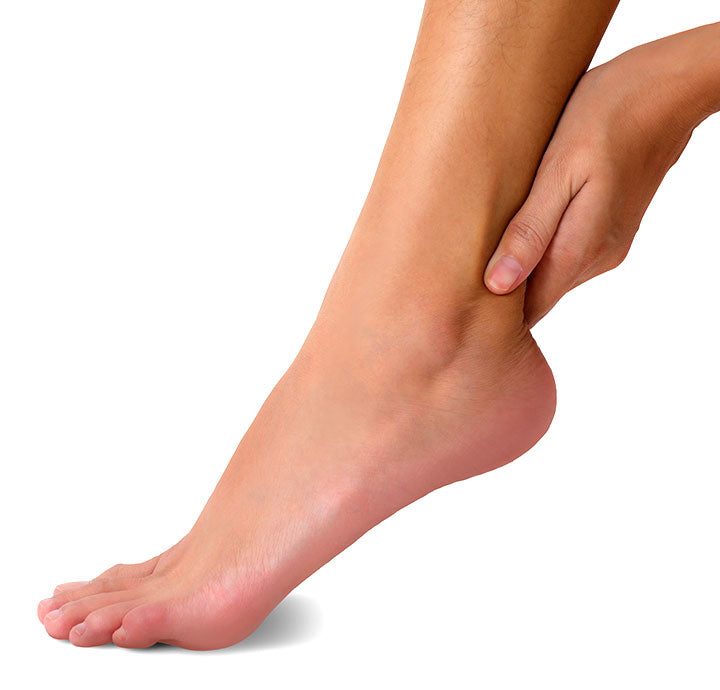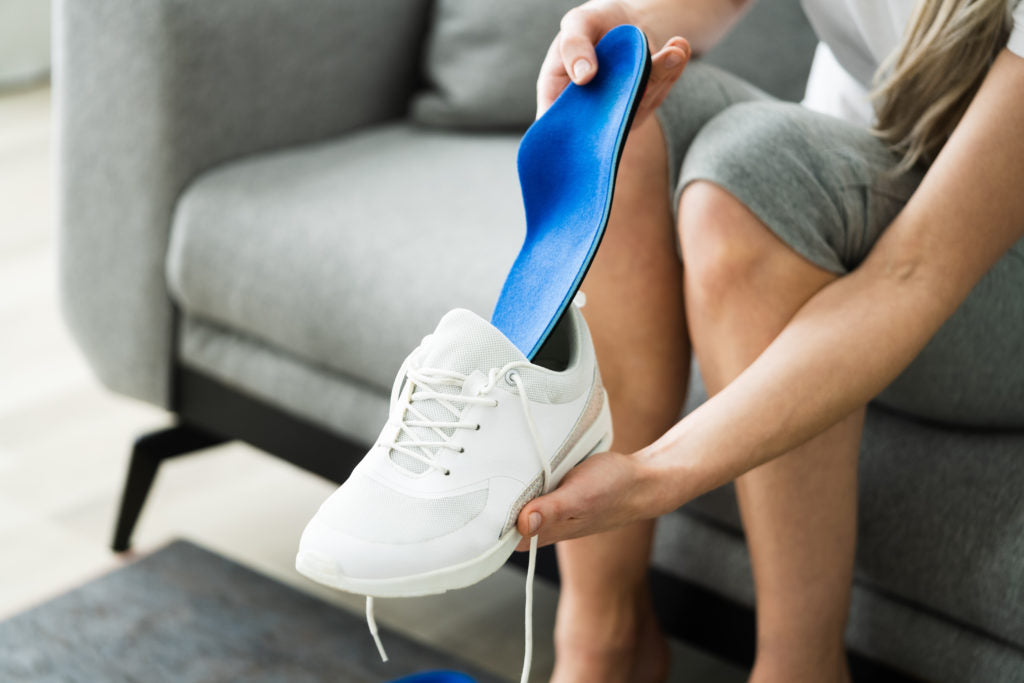
Ankle pain frequently occurs because of injury to one or more of the ankle bones, ligaments or tendons. Several types of arthritis and other conditions can also cause ankle pain.
The ankle is a complex system of bones, tendons, ligaments, and muscles. While your ankles are strong enough to support your weight and allow you to move, injury and overuse can trigger pain.
Most ankle pain stems from an injury during physical activity – sprains and fractures are most common. For example, you can sprain your ankle if you roll, twist or turn it in an awkward way
Ankle pain is most often caused by an injury or health condition.
Injuries that are common causes of ankle pain include:
Ankle sprains - An ankle can suffer a sprain when the surrounding ligaments either tear or become overstretched. A sprain may occur if the ankle twists or rolls.
Ankle bone breaks - Pain and swelling can occur if there’s a fracture in any of the bones that form the ankle joint.
Tendinitis - If an ankle tendon becomes inflamed or injured, pain may result. Achilles tendinitis is a common cause of ankle pain.
Achilles tendon rupture - When the Achilles tendon ruptures, there’s typically a sharp and instant pain felt in the back of the ankle.
Bursitis - Ankle pain can occur when the fluid-filled sacs that cushion the ankle joint become inflamed.
Health conditions that can cause ankle pain include:
Flat feet - When the feet have little to no arch, the area around the feet, including the ankles, can become sore and painful.
Arthritis - Certain types of arthritis can cause ankle pain, including:
- Osteoarthritis - The most common type of arthritis, osteoarthritis (OA) causes cartilage to break down. Cartilage is responsible for cushioning the ends of bones. Without adequate cartilage, friction develops and bones can begin to rub together. Osteoarthritis ankle pain is often felt in the area between the ankle and the bone of the shin.
- Gout - This type of arthritis causes uric acid to build up in the blood, creating sharp crystals that can get stuck in a number of areas of the body, including the joints. This can cause significant pain that comes on suddenly. Gout most often affects the big toe but it can cause ankle pain as well.
- Rheumatoid arthritis - An autoimmune disorder, rheumatoid arthritis causes the immune system to attack joints, triggering pain and inflammation. The ankles are often affected.
- Psoriatic arthritis - While psoriatic arthritis most commonly involves the toes and fingers, the condition can contribute to ankle pain as well.
Certain risk factors increase the likelihood of ankle pain, including:
Age - As people get older, it’s more common to experience ankle pain due to the natural aging process which causes structural changes in the feet and ankles.
Certain sports - Ankle pain and injuries are more common in people who participate in high-impact sports as well as sports that involve twisting and turning.
Obesity - People who are overweight are more likely to develop ankle pain due to the added stress to feet and ankles from carrying extra pounds.

In many cases, ankle pain improves with basic, self-care measures, including:
R.I.C.E - One of the most basic at-home treatments for minor ankle pain is a multi-faceted approach called RICE, which stands for rest, ice, compression and elevation. This combination can help relieve pain and swelling in the ankles.
- Rest - If your ankle hurts, stop what you’re doing and immediately take weight off the sore ankle. Avoid physical activity that triggers the pain while the ankle has a chance to heal.
- Ice - You can apply ice to the painful area of the ankle several times a day for up to 20 minutes to relieve pain and inflammation.
- Compression - Wrap the ankle with an elastic medical bandage to control swelling.
- Elevation - Lift the ankle and keep it above heart level. This can be helpful for both pain and inflammation.
OTC pain medications - Over-the-counter pain relieving and anti-inflammatory drugs such as ibuprofen, aspirin and naproxen can help reduce swelling while reducing pain.
Orthotics and Insoles - Consider wearing orthotics or insoles with your shoes. These devices can reduce the effect of shock-causing ground impacts, which can aggravate the ankle joint. Orthotics can also provide extra ankle support while improving stability and alignment of the foot and ankle.
See your doctor if your ankle pain is severe and doesn’t improve using self-care methods at home. Some ankle injuries and conditions require stronger treatments, including prescription medications, injections and surgery.
What can cause ankle pain without injury?
Arthritis — Certain types of arthritis, most commonly rheumatoid arthritis and osteoarthritis, can cause pain in the joints, including the ankle joint.
Flat feet — A common issue, flat feet occurs when there’s little to no arch in the feet. The condition can cause pain and swelling in the feet as well as the ankles.
Infection — Certain types of infections such as cellulitis and osteomyelitis can lead to pain and swelling in the ankles.
Ankle bursitis — The ankles can become painful due to bursitis, a condition caused by inflammation in the fluid-filled sacs that help cushion the ankle joints. While bursitis can be caused by injury, there are other causes such as arthritis and infection.
Can plantar fasciitis cause ankle pain?
How to massage ankle pain?
If your provider gives you the green light and you want to try self-massage, here are some tips:
Using your fingertips on each hand, lightly massage around the ankle using circular movements. It may be helpful to use a massage oil so your fingertips can glide easily without applying too much pressure. You can do this for several minutes at a time. You can also try sliding your fingertips back and forth along both sides of the ankle. Stop immediately if you feel pain or discomfort.
How to get rid of ankle pain?
Wearing insoles with your shoes can also help alleviate ankle pain. Dr. Scholl’s® Stabilizing Support Insoles reduce shock and promote balance while maintaining ankle alignment.
If you have severe ankle pain or if at-home methods don’t provide relief, see your doctor. You may have an injury or condition that requires prescription treatment or surgery.
how to stop ankle pain?
Take it slow — If you’re beginning a new exercise or sport, start slowly and gradually increase the intensity and duration of your workouts.
Mix it up — Consider cross-training to avoid overuse injuries that can lead to ankle pain.
Shop for footwear wisely — Choose shoes that are appropriate for your chosen sport or activity.
Enhance your shoes — You can increase the performance of good quality shoes with insoles or orthotics.
How to help ankle pain?
You may also be able to help ankle pain by maintaining a healthy weight, limiting high-impact sports and wearing high quality shoes with insoles for extra support and stability.


